By Carol Woodbridge Mulder ©1990
** Originally published in the May June 1990 'Upcoming Stars feat. Oran' issue of The Crabbet Influence magazine. Also published in The Crabbet Influence's 1993 Collectors Volume II.
The W.K. Kellogg Arabian Horse Ranch manager, Herbert H. Reese, was not only an astute and well educated horseman, manager, businessman, and gifted horse breeder, but was also a born horse trader. In 1930 there were so few Arabians in the United States - less than 800 living animals - that, despite the depression, buyers were to be found for most of the few Arabs which were available for sale. Thus, Mr. Reese and Mr. Kellogg not only continued to buy Arabians useful to the ranch breeding program, but also bought some individuals for the specific purpose of resale.
Seven Arabians were bought by the Kellogg Ranch in 1930, but only three of them were incorporated into the Kellogg breeding pool.
The first purchase, in the spring, was from Mr. W. A. Breckenridge.
SARACEN 422 - Age 10. Chestnut gelding foaled March 2, 1920. Abeyan Sherrak. Bred by F.E. Lewis II, Spadra, California. Sire: Harara 122, by *Deyr 33 (desert bred x desert bred) out of *Haffia 45 (Hamdani of the Anazeh x *Abeyah 39). Dam: Samit 153, by *Kusof 35 (desert bred x desert bred) out of *Haffia 45 (Hamdani of the Anazeh x *Abeyah 39). Sire line: *Deyr 33. Family: *Abeyah 39.
Mrs. Betty Bassett boarded her mare and filly at the Kellogg Ranch. Mr. Reese was so favorably impressed with the mare, Leila, that when Mrs. Bassett was ready to sell the pair in May the Kellogg Ranch bought them for $6000; this was an enormous sum of money in 1930 and is a strong indication of Mr. Reese's opinion of Leila.
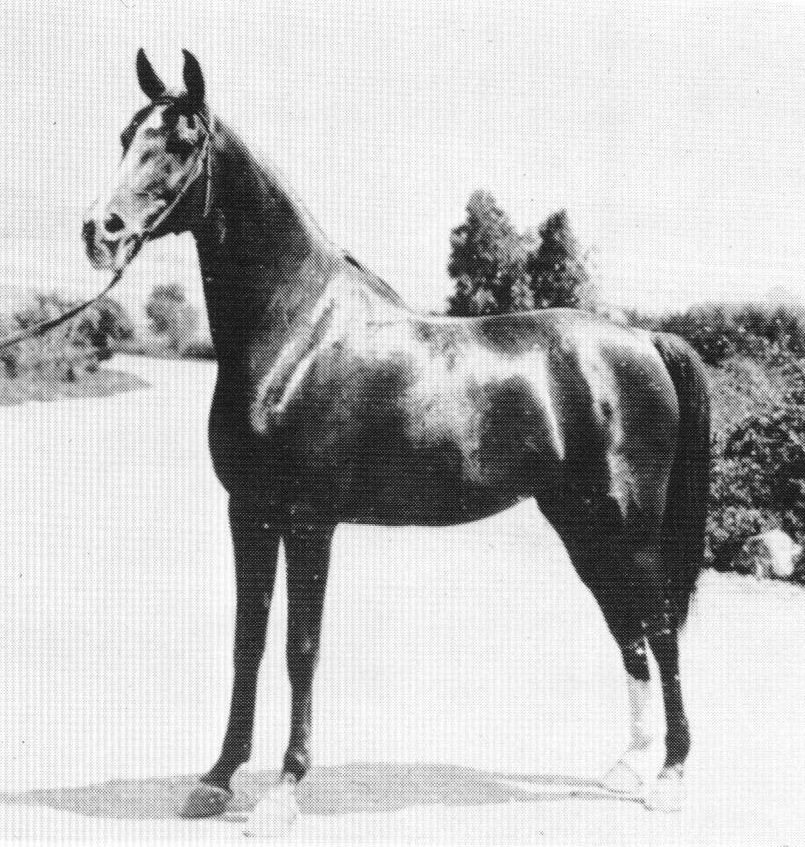
LEILA 275 - Age 13. Chestnut mare foaled May 16, 1917. Maneghi Hedruj. Bred by S.C. Thompson, San Francisco, California. Sire: El Jafil 74, by *Ibn Mahruss 22 (Mahruss II x *Bushra 23) out of Sheba 19 (Mannaky Jr 292 x *Pride 321). Dam: Narkeesa 7, by Anazeh 235 (*Leopard 233 x *Naomi 230) out of *Naomi 230 (Yataghan x Haidee). Sire line: Barq. Family: Haidee.
ALILATT 632 - Age 3. Brown filly foaled March 4, 1927. Maneghi Hedruj. Bred by Betty Bassett, San Luis Obispo, California. Sire: Saraband 423, by Harara 122 (*Deyr 33 x *Haffia 45) out of Sedjur 193 (*Hamrah 28 x Aared 91). Dam: Leila 275, by El Jafil 74 (*Ibn Mahruss 22 x Sheba 19) out of Narkeesa 7 (Anazeh 235 x *Naomi 230). Sire line: *Deyr 33. Family: Haidee.
In August, during a buying trip to the east, Mr. Reese bought two mares and a stallion from Colonel Gordon Hunter of Hartford, Connecticut. These animals had previously been owned by the Fred Stone family of New York. They arrived at the Kellogg Ranch in California on November 9, 1930.
NARKHALEB 114 - Age 19. Chestnut stallion foaled June 6, 1911. Maneghi Hedruj. Bred by Meldrum Gray of Columbus, Ohio. Sire: Leucosia 50, by *Haleb 25 (desert bred x desert bred) out of Narkeesa 7 (Anazeh 235 x *Naomi 230). Dam: Khaletta 9, by Khaled 5 (*Nimr 232 x *Naomi 230) out of Nazlina 6 (Anazeh 235 x *Nazli 231). Sire line: *Haleb 25. Family: Haidee.
SANMA 411 - Age 10. Bay mare foaled June 24, 1920. Seglawi Al-Abd. Bred by Hingham Stock Farm of Hingham, Massachusetts. Sire: Maleik 61, by *Haleb 25 (desert bred x desert bred) out of *Abeyah 39 (desert bred x desert bred). Dam: Sankirah 149, by *Hamrah 28 (Hamdani of the Anazeh x *Urfah 40) out of Moliah 109 (*Hamrah 28 x *Wadduda 30). Sire line: *Haleb 25. Family: *Wadduda 30.
CAROLSTONE 637 - Age 5. Chestnut mare foaled March 17, 1925. Abeyan Sherrak. Bred by Hingham Stock Farm of Hingham, Massachusetts. Sire: Kilham 408, by *Hamrah 28 (Hamdani of the Anazeh x *Urfah 40) out of Killah 103 (*Gomusa 31 x *Hadba 43). Dam: Dehaff 414, by *Deyr 33 (desert bred x desert bred) out of *Haffia 45 (Hamdani of the Anazeh x *Abeyah 39). Sire line: Hamdani of the Anazeh. Family: *Abeyah 39.
During this same eastern trip Mr. Reese acquired the mare Mariam. Her previous owner had been unable to pay for her and Mr. Reese apparently got her for the amount owing - $250. She was part of the shipment which arrived at the Kellogg Ranch on November 9, 1930.
MARIAM 181 - Age 15. Chestnut mare foaled June 30, 1915. Kehilan Ajuz. Bred by W.R. Brown of Berlin, New Hampshire. Sire: *Abu Zeyd 82, by Mesaoud (Aziz II x Yemameh I) out of Rose Diamond (Azrek x Rose of Jericho). Dam: Nanda 15, by *Garaveen 244 (*Kismet 253 x Kushdil) out of *Nejdme 1 (desert bred x desert bred). Sire line: Barq. Family: *Nejdme I
Saracen, a double grandson of *Haffia and a grandson of *Kusof, whose blood is not as frequently seen as that of some of the other Davenport import stallions, had clearly been bought for resale. He seems to have been sold from the Kellogg Ranch during the year of his purchase. The 1934 stud book lists his owner as Dr. Guy L. Bliss, Long Beach, California.
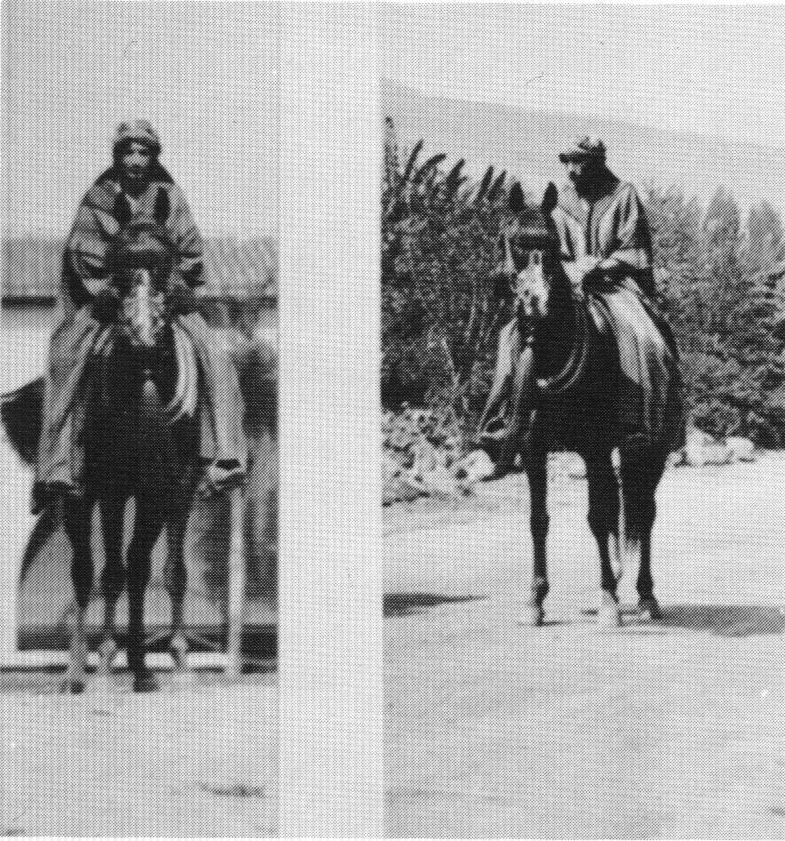
The coveted Leila went into the Kellogg broodmare band and proved herself a matron of rewarding capability. For the Kellogg Ranch she produced three foals of merit by Hanad 489 and Ralet 759. She was sold in the spring of 1938, at age 21, to Fred E. Vanderhoof, Woodlake, California, who bred one foal from her sired by Jadaan 196. This was her chestnut son Leidann 1679. Mr. Vanderhoof sold Leila in 1939 to Hugh B. Evans, Los Angeles, California, but she was apparently taken back by Vanderhoof when Dr. Evans died. Mr. Vanderhoof appears to have resold Leila, still in 1939, to A.W. Bramhall, Covelo, California. Mr. Bramhall bred Leila's last foal from her. This one was her very handsome and high quality son El Kunut 1856, sired by El Kumait 1124. El Kunut was foaled when Leila was 23. Mr. Bramhall sold Leila in 1941, at age 24, to Howard W. Ray, Indio, California, and there her trail ends.
During her life Leila produced a total of six foals, five of which were colts; Alilatt, foaled before her purchase by the Kellogg Ranch, was her only daughter.
Leila had a precious pedigree and studying it helps to clarify the probable reasons for her own merit and her unusually strong ability to produce quality offspring by a variety of stallions.
Leila was a full-sister to El Sabok 276, a 15.1 ½ hands stallion who was esteemed in his day and for long after as the result of his outstanding performances in official U.S. Army endurance tests. *Ibn Mahruss, the topline grandsire of Leila was an in-utero import from Crabbet Stud, England, and a grandson of the great action progenitor Azrek. Leila's paternal granddam, Sheba, was of 100% Hamidie lineage. This is extremely valuable breeding and is part of the very meritorious strictly American heritage in Arabian horse breeding. Sheba was a mare of clean quality. Narkeesa, Leila's dam, was a proven producer of exceptional ability. Her sire, Anazeh, was the earliest-foaled American-bred registered in our Arabian Horse Registry of America, Inc. Anazeh was foaled May 10, 1890. His sire, *Leopard, was a horse of quality who was known for his exceptional ability at the trot. *Leopard was from the private stables of Sultan Abdul Hamid II of Turkey and was a gift from the Sultan to former United States President U.S. Grant who achieved fame as a Union General in our Civil War. Narkeesa was double *Naomi; she was the incestuous product of a *Naomi son being bred back to *Naomi. This may help explain the breeding power of Narkeesa because *Naomi has clearly emerged as one of the most important foundation mares of the United States. She was also known for her good trot. For connoisseurs of the very choicest old American Arabian horse bloodlines, Leila's pedigree represents a nostalgic collection of the finest stock.
Leila was a tall mare standing over 15.1 hands. She was marked with a strip and right hind three-quarter stocking. Mr. Reese wrote that Leila was a "strong full made mare" and that she had "ample quality with an excellent type of Arabian head...." He further praised her withers and her good trot. In her various photos, Leila also appears to have had a clean and light neck of satisfactory length and good legs.
Alilatt was sold to William Randolph Hearst for his San Simeon, California, ranch in May of 1930 - almost immediately after her purchase by Mr. Kellogg. She became a good broodmare for the Hearst program, producing five San Simeon foals whichincluded three mares of note suring their time: Vivienna 1002, 1933 bay by Joon 439; Kasila 1266, 1936 bay by Kasar 707; and Rimadi 1508, 1938 gray by Ghazi 560. Vivienna was Alilatt's first recorded foal and arrived when she was 6 years old. Alilatt was sold in 1937, at age 10, to C. King Charney who quickly resold her to E.D. Bayerle, La Canada, California. By 1938 she was back at the Hearst ranch. She was sold again in April of 1939 to Mrs. Marie Julian Clearman, Pomona, California. That same month Mrs. Clearman bred Alilatt to Rifnas 924 and then in August she sold the mare to Ruth Hanna Sims, Albuquerque, New Mexico, under whose ownership the foal, 1940 chestnut mare Guemera 1807, was foaled. The stud book entry for Guemera lists the wrong breeder for her. Readers who wish to keep their stud books corrected may want to note that Guemera was bred by Marie Julian Clearman, Pomona, California, and not by Ruth Hanna Sims, as is incorrectly recorded. Mrs. Sims bred nothing from Alilatt. In 1941 she sold the mare to Bazy Miller, now Bazy Tankersley, of Tucson, Arizona. Under this ownership Alilatt produced her last foal in 1942; she died a month later at age 15. She had produced a total of seven foals in her life, five of them fillies.
Alilatt is shown in the registry's fiche cards as bay, but in early records she was shown as a brown. I have chosen to use the brown color for her in this article because many people do not or cannot make the distinction between brown and bay, but when such distinction is made it is usually done by one who does not know the difference. Thus, I feel that the early recording of Alilatt as brown was because some horseman of the past did know the difference and made the distinction. This may or may not be a correct assumption; readers may consider Alilatt bay or brown, as they wish. She was marked with only a small star. It is said that she had a good temperament and a pretty head.
Narkhaleb, of whom no photograph is known to exist, had one of the most unusual and interesting pedigrees of all the stallions purchased by the Kellogg Ranch. Narkhaleb was the only get of Leucosia, one of only three sons of the celebrated Davenport desert import *Haleb who was commended for his good trot among other traits. Narkhaleb's dam, Khaletta, was a daughter of the very handsome Khaled, grandson of the great racer *Kismet and great-grandson of Maidan, the latter surely one of the most remarkable Arabians of all time. In fact, Khaletta was linebred to Maidan as she was the product of a Maidan great-grandson going to a Maidan granddaughter; this pedigree is unusual. Khaletta was inbred to the great mare *Naomi. Her sire was the product of a *Naomi grandson bred to *Naomi and Khaletta's dam, Nazlina, was a double granddaughter of *Naomi. Khaletta was 56.25% *Naomi. Narkhaleb himself had two additional crosses to *Naomi via his paternal granddam Narkeesa; Narkhaleb's six lines to *Naomi gave him a total of 46.875% of her blood. Narkhaleb was also a double great-grandson of the good and important early American sire Anazeh. Narkhaleb's pedigree represented by 75% the inbreeding program of Randolph Huntington; both Khaletta and Narkeesa were bred by Mr. Huntington who emphasized trotting action in his selection. Narkhaleb's pedigree represented a treasure of this significant old American breeding.
Narkhaleb had no markings. He evidently was rather plain headed.
The Kellogg Ranch bred one foal from Narkhaleb before his death in about 1931. This was the mare Narlah 916, 1932 out of Killah 103. A smooth and attractive mare who had lovely eyes, Narlah was the only one of Narkhaleb's three get to breed on; it is only through Narlah that Narkhaleb, Leucosia, and Khaletta blood can be found today, but since Narlah was the third dam of the internationally renowned stallion Ben Rabba this blood has now been disseminated to several different Arabian horse breeding countries. Narlah was retained in the Kellogg broodmare band long enough to produce her first foal for the ranch. She was an outstanding producer of high quality stock.
Readers who may have been following this series of articles about the Kellogg Ranch will perhaps remember that Narkhaleb's only son, Mizuel 388, was included in the first group of purebred Arabs purchased by Mr. Kellogg in 1925.
Sanma was marked with some sort of narrow blaze, although the exact nature of the markings is not clear in early records. She was the only get of the very high quality and beautiful Maleik to reproduce, but, since neither of her two foals bred at all, this line has long since unfortunately died out. For the Kellogg Ranch, Sanma produced Maras 871, 1931 bay stallion by *Raseyn 597. She was sold in 1932, at age 12, to H.B. Lake whose address I cannot determine.
Carolstone was apparently named after Fred Stone's daughter Carol. This mare was marked with a strip in her face. Her sire, Kilham, was acclaimed for his beauty. Carolstone was sold from the Kellogg Ranch in May of 1931 to James N. Clapp, Pomona, California. She was bought back by Kellogg's in 1934 and sold again that same year to J.W. Mailliard, Jr., Yorkville, California. For Mr. Mailliard she produced all three of her foals - one filly and two colts. Only one of these, her beautiful chestnut son Manakha 2970, sired by Abu Ben Adhem 1636 and foaled in 1944, bred on.
Mariam was the first Arab bred by W.R. Brown to be acquired by the Kellogg Ranch as well as the ranch's first *Abu Zeyd daughter. She was marked with a blaze and stockings on both hind legs. While she was not of the quality represented by two later Kellogg-owned *Abu Zeyd daughters, Mariam was a good mare who had the extremely typey head for which *Abu Zeyd daughters were noted. She had good shoulders and was over-all feminine and pleasing in appearance. *Abu Zeyd was one of only two sons of the great foundation Crabbet sire Mesaoud to be brought to America. *Abu Zeyd was a horse of great merit. Nanda, dam of Mariam, was sired by the very good and extremely attractive *Garaveen whose pedigree was exceptional. *Garaveen was a son of *Kismet and a grandson of Kars and *Naomi. *Kismet and *Naomi have already been mentioned elsewhere in this article. Kars was the first stallion to stand at Crabbet and was a horse of quality with an unusual and interesting history that showed him to have been not only beautiful, but also almost unbelievably tough, durable, and possessed of an unusually strong will to live. *Nejdme, Mariam's second dam, was a Hamidie import mare and was the first Arabian registered with The Arabian Horse Registry of America, Inc., known at the time as The Arabian Horse Club of America.
Mariam was sold by the Kellogg Ranch on January 17, 1931, at the age of 15. Her buyer was William Randolph Hearst. The old Kellogg records say she died that same day, but her death was not recorded by the registry until October 1936.
During her life Mariam produced only two foals, a colt and a filly. Neither left registered stock and so Mariam's blood died out long ago.
The next article in this series will cover the 1930 Kellogg foal crop of which several members, such as Roaba 749, Ralet 759, Sanad 761, Antafa 755, Badia 760, and Rasrah 865, were of special interest.
**All of the articles included in the re-launched Crabbet.com site from the original website, Georgia Cheer, Silver Monarch Publishing and The Crabbet Influence magazine are shared here with permission of Georgia Cheer given May 16, 2012.**

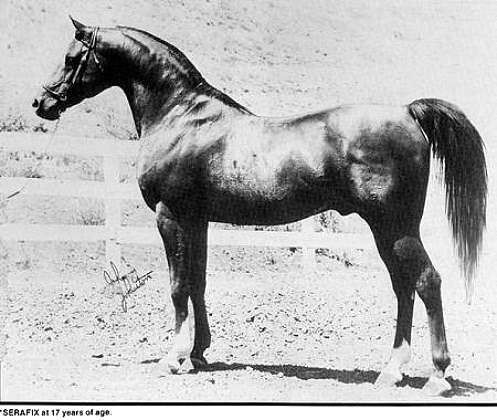
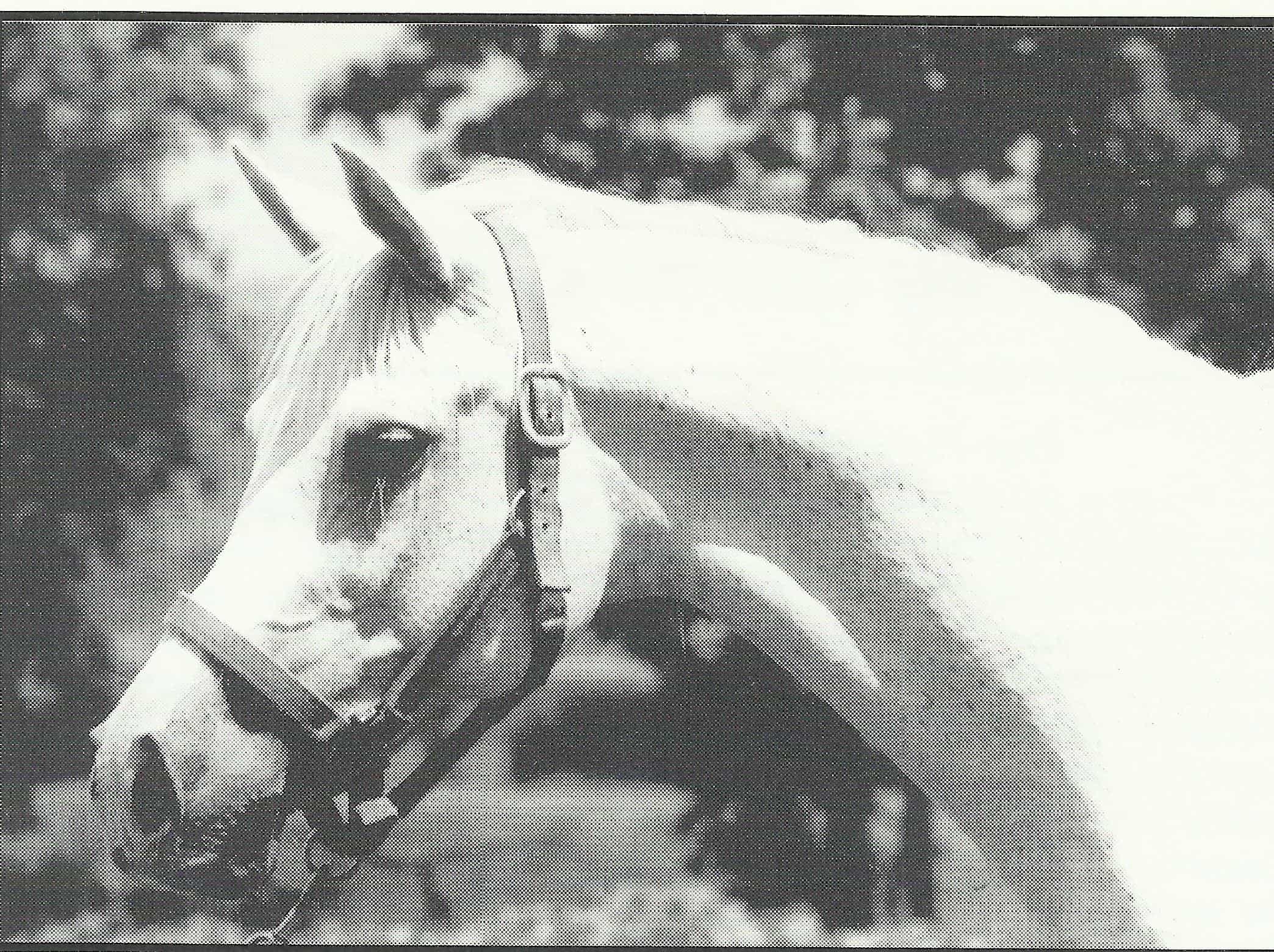

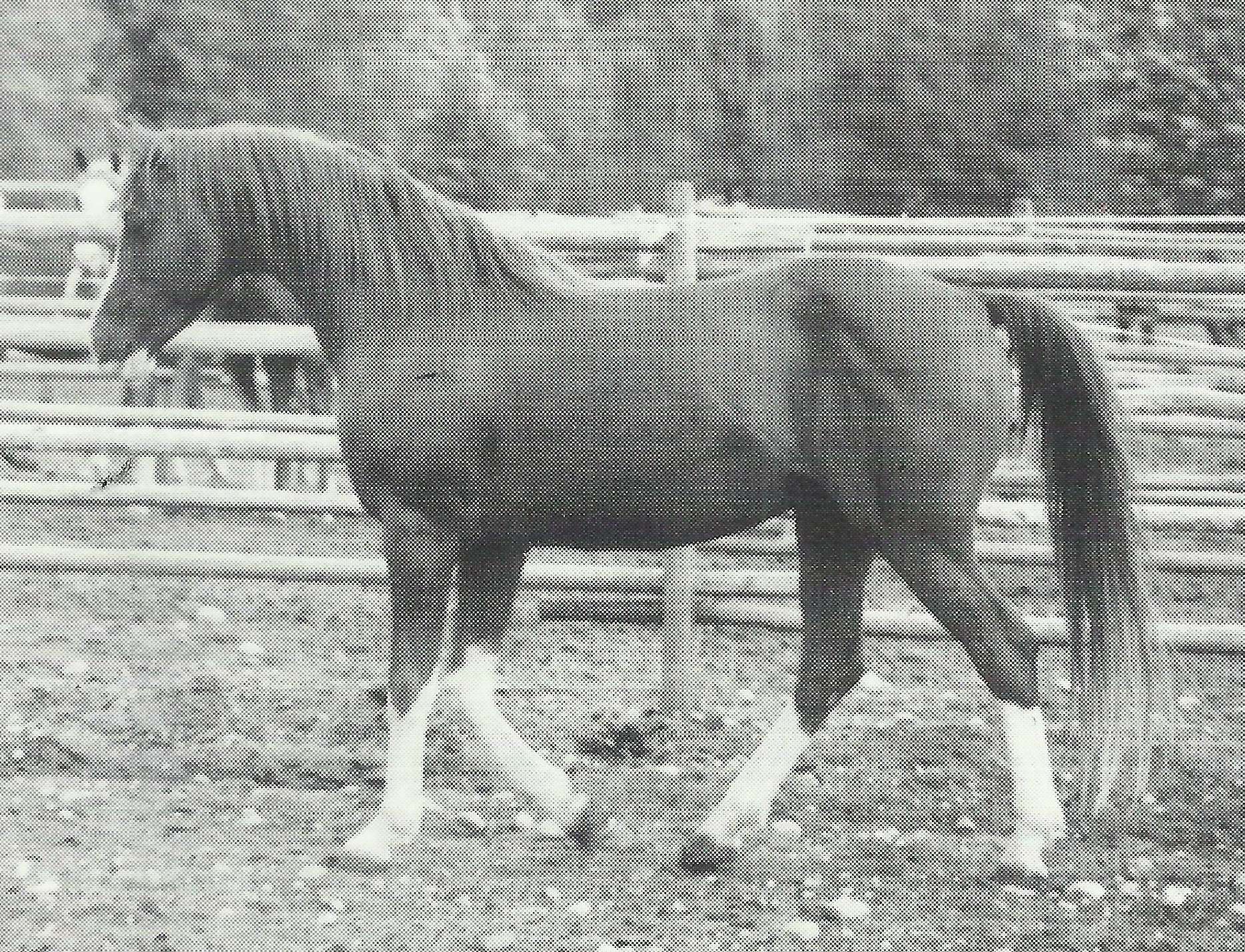
Comments
No Comments